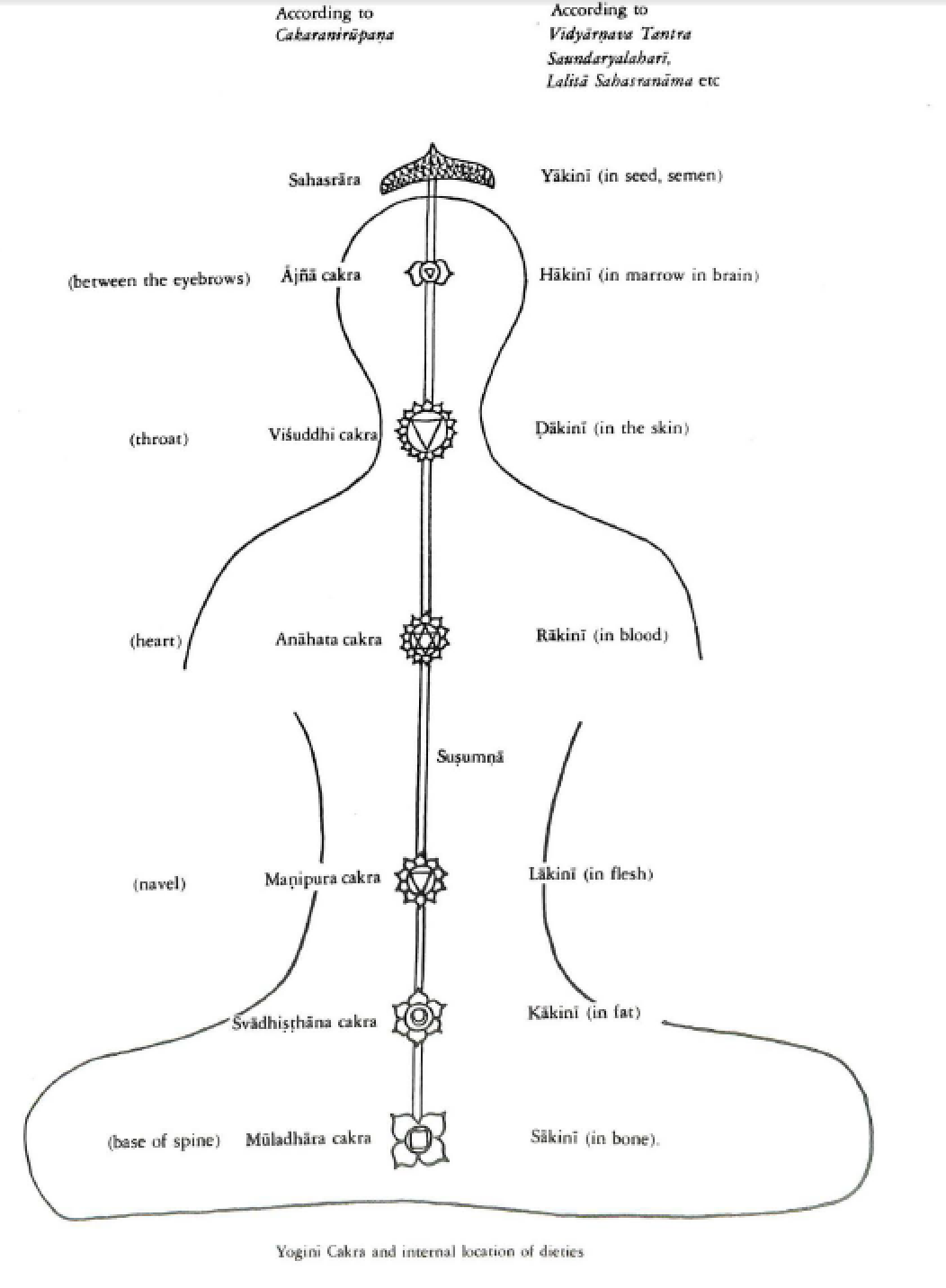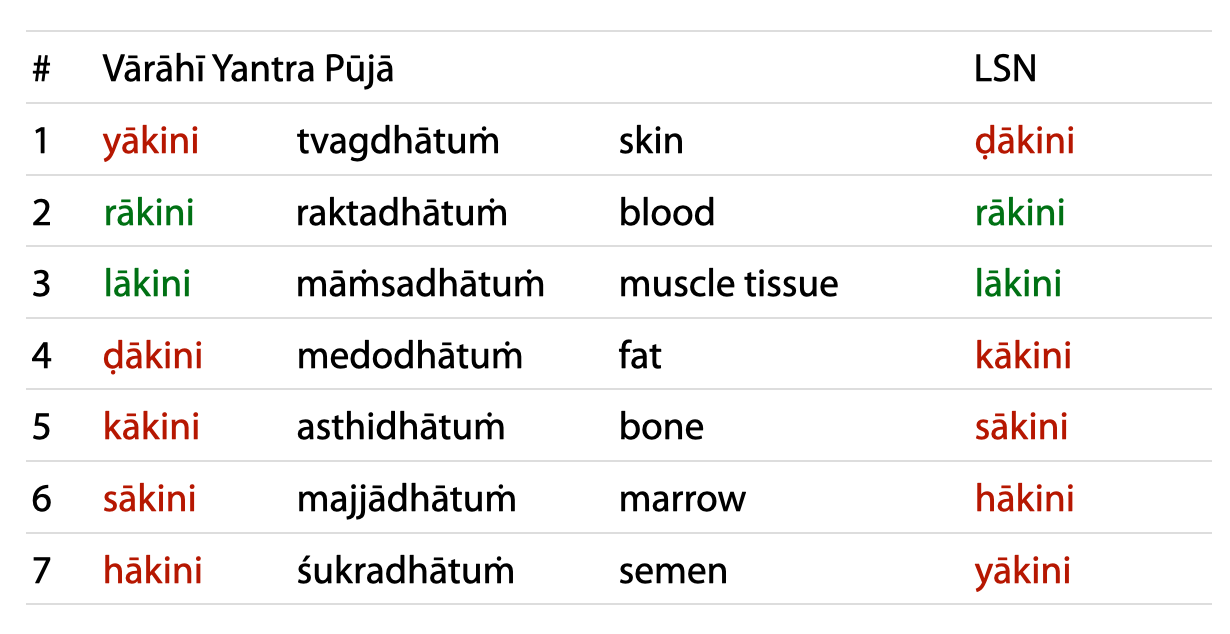JyothiViswanadham
As far as I can see the question is basically to provide advice on how to relate two different conceptions of the dhātu yoginīs. The subtext of the question is that there is a contradiction in that the LSN and the Ṣaṭcakranirūpaṇa (SCN) do not match regarding these yoginīs. I believe they don't have to be related, or even really need to be, but to relate them would require a very in-depth understanding of both systems and of kaula tantra yoga and haṭha yoga at large.
In terms of the discrepancies, there are several plausible reasons why this may be, the least of which is that they come from two different regions and knowledge systems with differing lineage specific conceptions regarding these yoginīs.
The classification of the seven yoginīs described in the LSN adheres much closer, actually exactly, to those of a South India system stemming from specialized kaula lineages rather than what is described in the SCN. One can make what they will of that, but it is [hopefully not] controversial to suggest that the LSN is of South Indian provenance, or more accurately that it was first revealed in South India to Agastya.
The SCN is actually a fairly late tantric compendium which has, for purely historical reasons not completely unrelated to how the British and Arthur Avalon himself viewed the text, become the single guiding light for the vast majority of contemporary practitioners, but it in no way covers all the conceptions through the vast nectarean ocean of tantra śāstra.
While this isn't necessarily a travesty, it does create problems when people think that this text is the "one stop shop" for everything to do with the cakras and that if anything deviates from this now "classic" conception there may be something wrong.
For example, if we look into the Paraśurāmakalpasutra we can find, at least one, completely different conception of the cakras than the one from the SCN.
Provisionally it seems that the LSN and the SCN are from two different lineages, one more kaula and one more aligned with haṭha yoga and so therefore they have slightly different conceptions of these yoginīs. As to why they differ on each point that would be a research project in and of itself. As to the question of why the Vārāhī yantra pūjā differs from the LSN in terms of the placements of dhātu yoginīs I think that requires us to do the sādhanā first and then continually refine our understanding. Hopefully someone else will be able to shed some light on the inner nature of the yoginīs as they relate through various texts and systems. Such questions are very difficult to think about, but the answers are often very simple. śrī gurubhyo namaḥ

The SCN conceptions of cakras as compared to yoginīs from the LSN has been pointed out in a comparative chart (photo attached) prepared by Vidya Dehejia, but not discussed in depth, in her classic book on the yoginīs entitled "Yoginī Cult and Temples: A Tantric Tradition."



